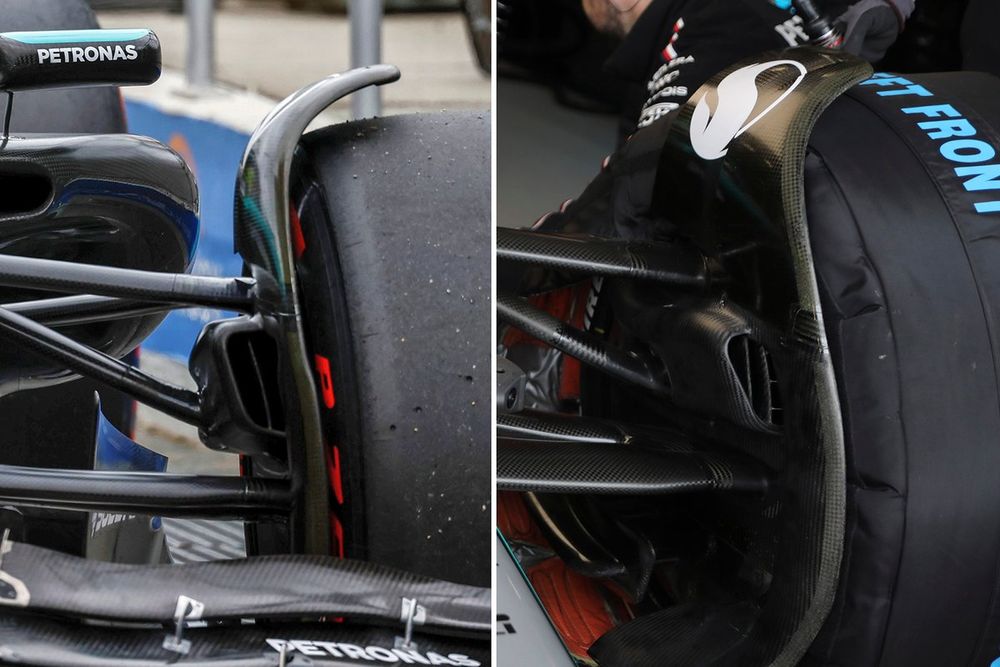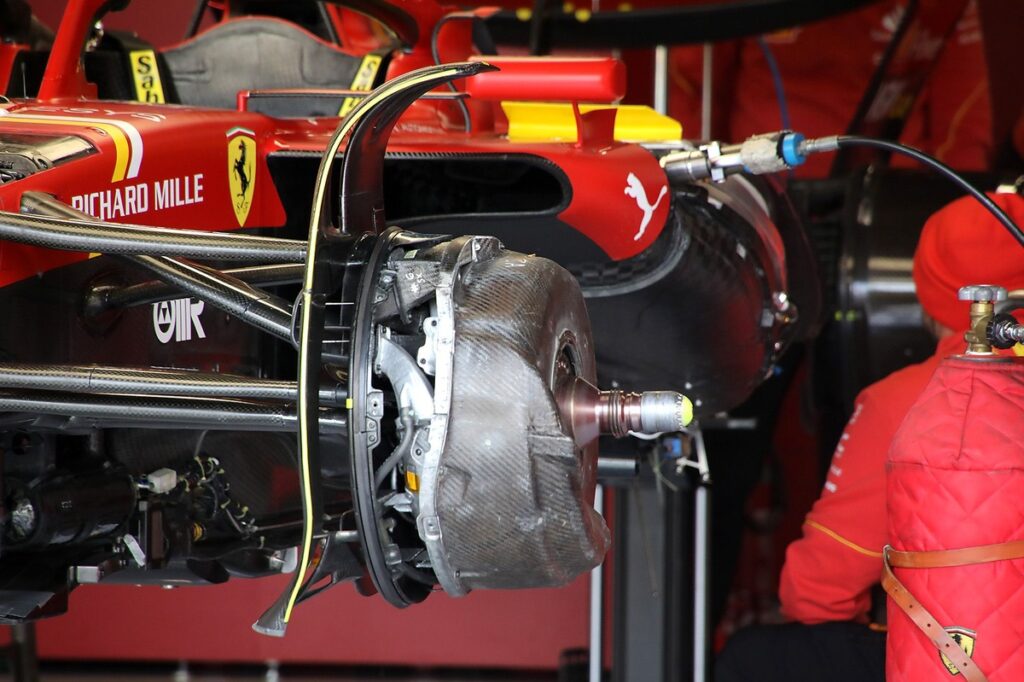Formula 1’s drastic 2026 rule changes are not just causing the teams various engineering headaches, but they are also “one of the most challenging” regulation revamps for brake designs.
The biggest regulatory overhaul in modern F1 will see the balance between combustion versus electric power change from around 80/20 to 50/50. Currently, F1 cars use a 120-kilowatt (161-horsepower) MGU-K, but next year, MGU-K power increases to around 350 kW (469 hp) while the MGU-H unit will be removed.
Coupled with active aerodynamics, the changes in power profile will change how fast grand prix cars will get up to speed. But it will also affect how they’ll stop with a much-increased capability for regenerative braking, as Brembo’s F1 customer manager Andrea Algeri explained to Autosport.
“This is my 15th season in Formula 1, so I went through different changes in the shape of brakes, cars, tyres, different wheels. This is honestly one of the most challenging [regulation changes] for us,” said Algeri, whose company is F1’s main supplier.
There are two main reasons the actual brake hardware is being overhauled so much for 2026. The changing demands stemming from increased energy recovery from the MGU-K and a rulebook that is more open than the previous one.
The FIA allows for front brake rotors of between 325 and 345 mm in diameter, and rears of 260 to 280 mm. All have a maximum thickness of 34 mm. It’s a wider range of sizes for both, which opens up the possibility of going larger at the front, and smaller at the rear.
The new regulations also allow for up to three attachment points for the callipers, instead of two, as well as more pistons and pads. Algeri says this is the biggest change on the calliper side in 20 years and “opens a bit of freedom for our engineers”.
Ferrari SF-24 Brembo calliper
Photo by: Giorgio Piola
The actuation of the braking system is conceptually the same as it has been since 2014. Front brakes are purely hydraulic, while the rear is brake-by-wire. The driver’s pedal input is translated as a torque request that the car translates into a blend of friction and regenerative braking.
The critical weight battle
As well as aerodynamics and power unit performance, a third key battleground in 2026 will be the huge challenge teams face to work their way towards an aggressive new weight limit. Despite the increase in battery size and weight, the total minimum weight limit has been reduced from 800 to 768kg.
In the F1 paddock there is a feeling that few, if any, teams will hit the weight limit from the start of the season, opening a third development race for the design departments. That has also had an impact on brake designs, with teams keen to shave off valuable grams wherever they can. Bigger is no longer better by default.
“The teams are looking for the best trade-off,” Algeri said. “Not going far bigger than the current season, because if they use the largest dimensions allowed, it could be too heavy. And on the other side, different teams have a different view of the energy recovery strategy.”
Algeri revealed that some teams are going big on the front brakes – though not up to the maximum size – and smaller on the rears. Others are taking a different approach. While obviously not being able to name names, he suggested that at least three teams have been “quite brave” in their quest to save weight, an approach which will likely be copied up and down the grid if it works.
Still, you can only go so small on the rear brakes. Both because of the regulations, but also because the rear brakes need to be capable of stopping the car without the aid of regeneration. For safety reasons, the FIA mandates a braking torque requirement for the rear axle of at least 2500 Nm of pressure for 150 bar of pedal pressure, without the assistance of the power unit.

Mercedes W15 front brake duct comparison
Photo by: Uncredited
“This is basically to avoid the crazy scenario where we have very thin or very small brakes on the rear, where if something is not working, it can result in a big problem,” Algeri explained. “The design will reflect extreme situations. You need a disc that’s big enough to survive in circumstances where the track layout or the energy strategy forces you to use the brakes like in the past.”
“We will probably see different cooling specifications for different tracks,” Algeri added. “For example, a light duty track will see few holes in the disk to keep the temperature a bit higher to keep the carbon in the proper window, while for other circuits you rely on high cooling disks with a greater number of holes.”
Why brake manufacturers will have to rethink their circuit ratings
Generally speaking, a bigger reliance on engine braking means the rear discs won’t see as much use as they do now, and therefore they will need less cooling. Carbon-carbon discs require heat to work, so Algeri says the rears may have fewer cooling holes, or different ducting channels to help maintain temperature. On the flipside, teams should need more cooling for the front discs, because these 2026 cars should be faster in a straight line.
The energy deployment challenges that F1 is still working through will also mean that the demands on the brakes will vary even greater between the likes of high-speed Monza and Monaco’s twisty street circuit, for example. But not necessarily in the way you expect.
“We have to rethink the rating regarding the braking duty of the circuit, because this now is more related to energy recovery,” Algeri said. “A light duty track in terms of torque, like Monaco or Singapore, will become quite strong for the brakes because you have a lot of time to recover energy and at a certain point the battery will be full, and then you have to use the brakes.
The braking strategy Algeri touched upon will be a crucial element of performance next year, with plenty of laptime to be gained in how the power unit is used alone, let alone the hardware. With a bigger reliance on regenerative braking, teams will have a lot of levers to pull to impact the way a car slows down for a corner, but also how the system harvests energy to be deployed by the MGU-K later.
F1 2026 will be a software as much as a hardware race and it will be fascinating to watch.
We want to hear from you!
Let us know what you would like to see from us in the future.
Take our survey
– The Autosport.com Team
Read the full article here

